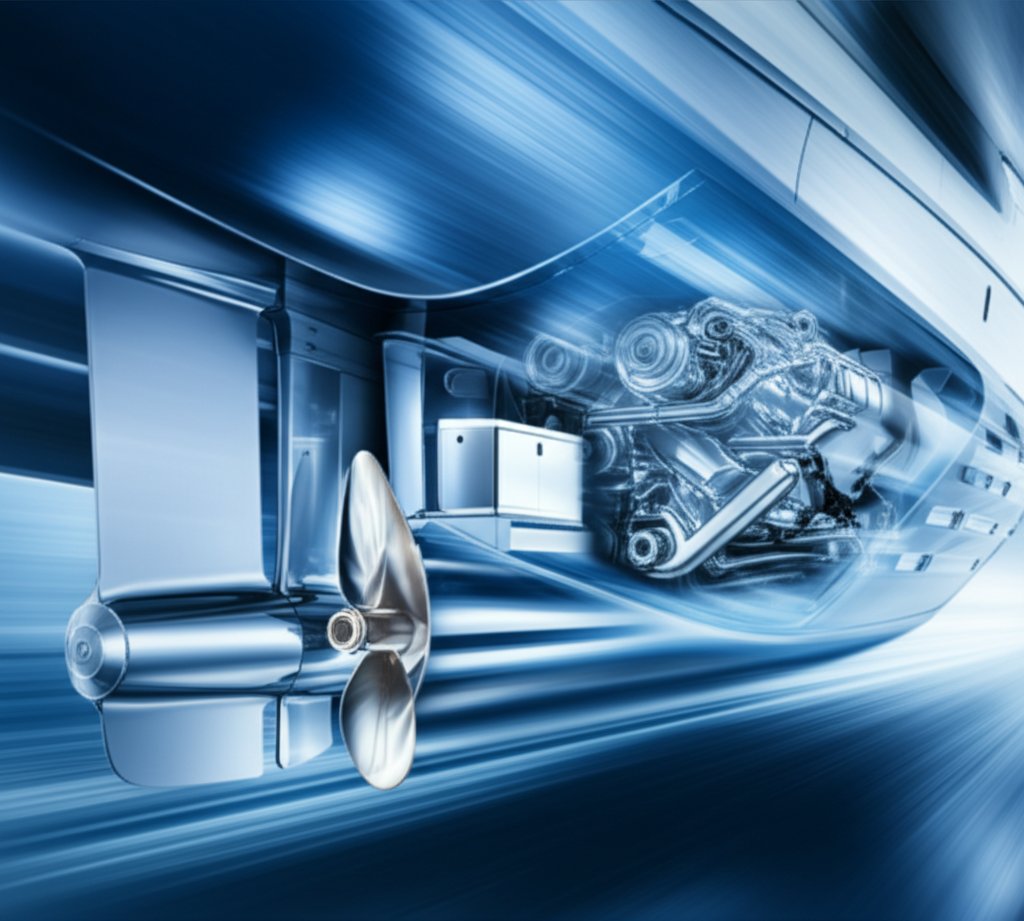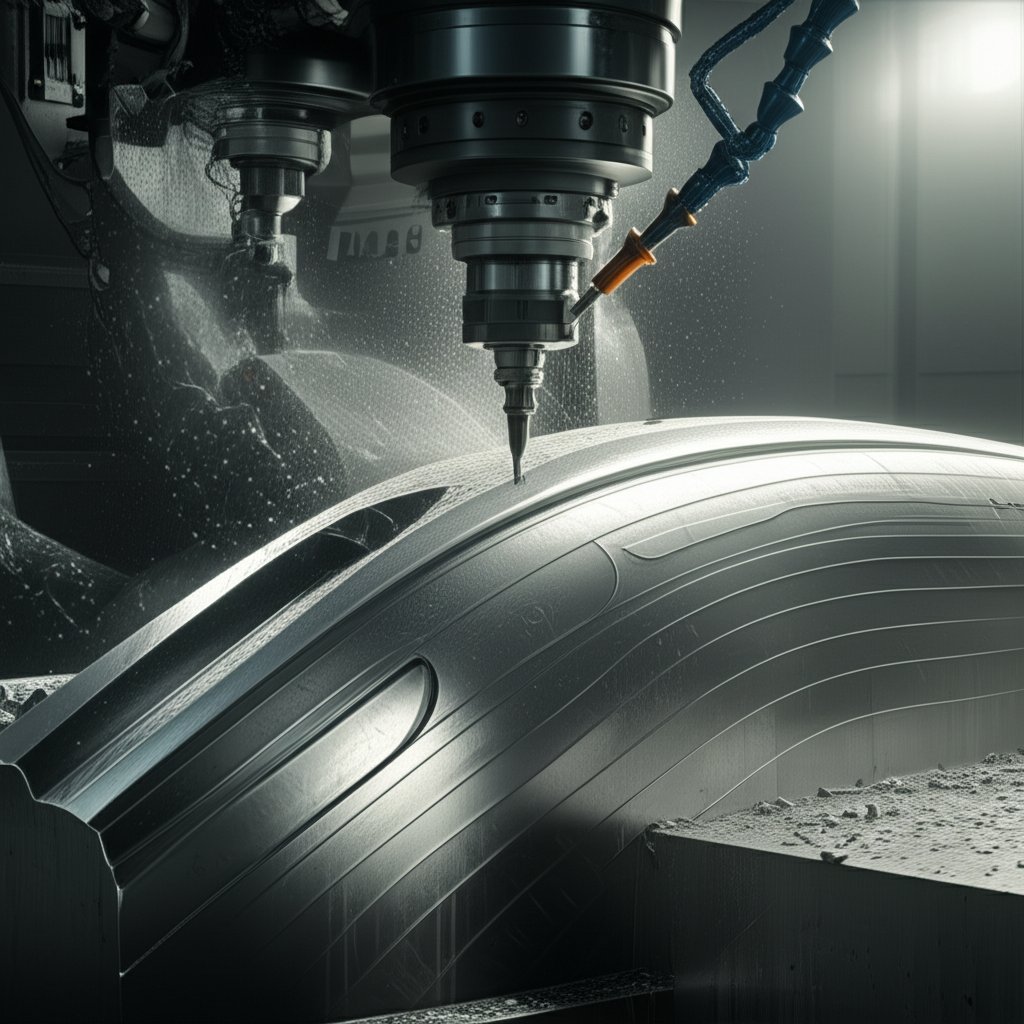Essential CNC Machining for Marine Applications Explained

TL;DR
CNC (Computer Numerical Control) machining is an indispensable technology for marine applications, enabling the production of highly precise, durable, and complex components. It is essential for manufacturing critical parts like propellers, shafts, and rudders from corrosion-resistant materials. This precision ensures the safety, efficiency, and longevity of marine vessels operating in harsh maritime environments.
The Critical Role of CNC Machining in the Marine Sector
The marine industry operates in one of the most demanding environments on Earth, where components are constantly subjected to high stress, corrosive saltwater, and extreme weather. In this context, CNC machining has become a cornerstone of modern shipbuilding and maintenance. Unlike traditional manufacturing methods, CNC machining provides the automation and precision necessary to create parts that meet the stringent safety and performance standards of the maritime world. This technology involves using computer-controlled machines to cut, shape, and finish materials with unparalleled accuracy.
The unique challenges of marine manufacturing necessitate this level of precision. Issues such as material integrity, hydrodynamic efficiency, and structural soundness are paramount. CNC machining directly addresses these challenges by producing parts with extremely tight tolerances, ensuring perfect fit and function. For instance, a flawlessly machined propeller operates with maximum efficiency and minimal vibration, enhancing fuel economy and vessel stability. According to BDE Manufacturing Technologies, this ability to handle complex geometries and produce durable parts is vital for withstanding harsh maritime conditions.
CNC machining solves several key problems inherent in marine manufacturing:
- Corrosion Resistance: It allows for the precise shaping of high-performance, corrosion-resistant metals and alloys like marine-grade stainless steel and titanium, which are essential for longevity.
- Structural Integrity: The accuracy of CNC-produced components, from hull frames to engine parts, ensures that every piece contributes to the overall strength and safety of the vessel.
- Complex Designs: Modern vessels require hydrodynamically efficient and complex shapes for parts like propellers and rudders. CNC machines can produce these intricate geometries with ease and repeatability.
- Efficiency and Waste Reduction: Automated processes minimize material waste and reduce the need for manual labor, leading to greater cost-efficiency over time, a crucial factor in large-scale shipbuilding projects.
Ultimately, the role of CNC machining is to bridge the gap between innovative design and practical application. It empowers engineers to create safer, more efficient, and longer-lasting marine vessels by turning complex digital blueprints into tangible, high-performance components. This technology is not just an alternative but a fundamental requirement for advancing marine engineering.
Key Applications: From Propulsion Systems to Custom Interiors
The applications of CNC machining in the marine industry are vast and varied, extending far beyond the engine room. This technology is pivotal in fabricating everything from critical propulsion systems that power massive ships to the fine details of custom yacht interiors. Its versatility allows manufacturers to produce a wide array of components, each tailored to specific performance and environmental requirements. The ability to work with diverse materials, from robust metals to lightweight foams, makes it an all-encompassing solution for shipbuilders.
Propulsion and structural components are perhaps the most critical applications. Propellers, shafts, rudders, and engine parts like crankshafts and pistons demand the highest level of precision to ensure smooth operation, fuel efficiency, and reliability. Any imperfection can lead to catastrophic failure. Similarly, large structural elements such as hull frames and bulkheads must be machined to exact specifications to guarantee the vessel's integrity. Beyond these, CNC machining is used for navigational equipment housings, electrical components, and custom fittings like winches and cleats.
However, the use of CNC extends to less obvious but equally important areas. For recreational watercraft and luxury yachts, CNC machines shape lightweight, moisture-resistant foam for flotation, insulation, and custom seating. This technology also enables the creation of custom cabinetry and interior elements with perfect fit and finish. Even in recreational water sports, CNC machining is used to produce high-performance surfboards, paddle boards, and kayaks with consistent quality and optimized designs.
To illustrate the breadth of these applications, the following table breaks down common marine components and the role CNC machining plays in their production:
| Component | CNC Process Used | Key Benefit |
|---|---|---|
| Propellers | 5-axis Milling | Ensures complex blade geometry for optimal hydrodynamic efficiency and reduced vibration. |
| Engine Shafts | CNC Turning/Lathing | Achieves perfect concentricity and balance, critical for high-speed rotation. |
| Hull Structures | Large Part Milling | Guarantees precise fit of large, complex sections, ensuring structural integrity. |
| Custom Yacht Cabinetry | 3-axis or 5-axis Routing | Allows for intricate designs and perfect joinery for a high-end finish. |
| Rudders | Multi-axis Milling | Creates precise airfoil shapes for responsive and efficient steering. |
| Foam Flotation Blocks | CNC Routing/Milling | Cuts lightweight foam into exact shapes for buoyancy and insulation. |
Advanced CNC Technologies and Processes
The effectiveness of CNC machining in the marine industry stems from a range of advanced technologies and processes tailored to specific needs. The choice of technology depends on the component's complexity, size, and material. The most common processes include CNC milling and turning, often utilizing multi-axis machines to handle the intricate geometries of marine parts. Understanding these technologies is key to appreciating their impact on modern shipbuilding.
Leading service providers like MetalQuest Unlimited utilize advanced 3-axis, 4-axis, and 5-axis CNC machining to achieve superior precision. These multi-axis capabilities are crucial for creating parts with complex curves and angles in a single setup, which reduces production time and improves accuracy. For companies looking to leverage such advanced capabilities, partners offering comprehensive services can be invaluable. For example, those seeking to accelerate product development from concept to functional testing can explore formative manufacturing services. A provider like XTJ offers rapid prototyping with a wide range of materials and provides crucial Design for Manufacturability (DFM) feedback, helping to optimize designs for production efficiency.
The primary technologies used in marine manufacturing include:
- 3-Axis CNC Machining: The tool moves along the X, Y, and Z linear axes. It is suitable for simpler parts, such as brackets, housings, and flat structural components.
- 4-Axis CNC Machining: This adds a rotational axis (the A-axis) to the 3-axis setup, allowing the workpiece to be rotated. It is useful for machining cylindrical components or features on the side of a part.
- 5-Axis CNC Machining: This technology adds a second rotational axis (the B-axis), enabling the cutting tool to approach the workpiece from five different directions simultaneously. It is essential for highly complex parts like propellers, impellers, and turbine blades, where smooth, contoured surfaces are critical for performance.
- CNC Turning: This process involves rotating the workpiece while a stationary cutting tool removes material. It is ideal for creating cylindrical parts with high precision, such as engine shafts, pins, and connectors.
The integration of technologies like CAD (Computer-Aided Design) and CAM (Computer-Aided Manufacturing) software is fundamental to the entire process. Engineers create a 3D model in CAD, which is then translated by CAM software into a set of instructions, or toolpaths, for the CNC machine to follow. This seamless digital workflow ensures that the final product matches the design specifications with microscopic accuracy.

Core Benefits of CNC Machining for the Marine Industry
The adoption of CNC machining in the marine sector is driven by a clear set of benefits that directly address the industry's primary concerns: safety, performance, and durability. This technology delivers improvements across the board, from the quality of individual components to the efficiency of the entire manufacturing workflow. The advantages are so significant that they have become the standard for producing high-quality marine equipment.
The core benefits stem from the technology's inherent precision and automation. As noted by Mahuta Tool, CNC machining provides uniform products and quick production, which is essential whether constructing a small dock or a massive freight ship. These advantages translate into tangible business outcomes, including reduced operational failures, longer part lifespans, and faster vessel construction and repair times.
The key benefits of using CNC machining for marine applications can be summarized as follows:
- Unmatched Precision and Consistency: CNC machines can produce thousands of identical parts with tolerances measured in micrometers. This consistency is crucial for components in propulsion and engine systems, where uniformity ensures balanced performance and reliability.
- Ability to Create Complex Designs: The marine industry relies on complex geometries for hydrodynamic efficiency. Multi-axis CNC machines can produce intricate shapes, such as the curved blades of a propeller, that would be nearly impossible to create with manual methods.
- Enhanced Durability and Material Compatibility: CNC machining is capable of working with a wide range of high-strength, corrosion-resistant materials, including marine-grade stainless steel, titanium, and bronze alloys. This ensures that components can withstand the harsh saltwater environment for extended periods.
- Increased Efficiency and Speed: Once programmed, CNC machines can operate continuously with minimal human oversight. This automation drastically reduces production time compared to manual machining, allowing for faster turnaround on both new builds and critical repairs.
- Improved Safety and Reliability: The high precision of CNC-machined parts eliminates microscopic defects and inconsistencies that can lead to component failure. This results in safer and more reliable vessels, reducing the risk of mechanical issues at sea.
Navigating the Future of Marine Manufacturing
CNC machining is not merely a manufacturing technique; it is a foundational technology that enables the modern marine industry to meet its ever-increasing demands for performance, safety, and complexity. From the precise contours of a propeller blade to the robust structure of a ship's hull, its impact is felt across every aspect of vessel design and construction. By delivering unparalleled precision, facilitating complex geometries, and ensuring consistent quality with durable materials, CNC machining provides the reliability required to conquer the harsh maritime environment. As technology continues to evolve with the integration of AI and advanced robotics, its role in shaping the future of shipbuilding will only grow, paving the way for even more efficient, durable, and innovative vessels on the water.

Frequently Asked Questions
1. What materials cannot be CNC machined?
While CNC machining is incredibly versatile, certain materials are not suitable for the process. These typically include very soft or flexible materials like rubber and silicone, which deform under the cutting tool. Other challenging materials include carbon fiber composites (which can delaminate), hard ceramics and glass (which can shatter), and extremely soft metals that may gum up the machinery. The choice of material is critical and must be rigid enough to withstand the machining forces.
2. Do CNC machinists make a lot of money?
Salaries for CNC machinists can be competitive and vary widely based on factors such as experience, skill level (e.g., ability to operate multi-axis machines), geographic location, and the specific industry. Highly skilled machinists with expertise in programming and operating complex 5-axis machines, especially in high-demand sectors like aerospace or marine, often command higher salaries.
3. What is the highest salary of CNC?
The highest salaries in the CNC field are typically earned by individuals who have advanced beyond the role of a basic operator. This includes senior CNC programmers, manufacturing engineers who design and optimize machining processes, or shop floor managers who oversee complex operations. Top earners can make well into six figures, particularly those with specialized skills in high-value industries and a deep understanding of advanced manufacturing technologies.
-
Posted in
boat building, cnc machining, marine engineering, marine manufacturing, precision machining





